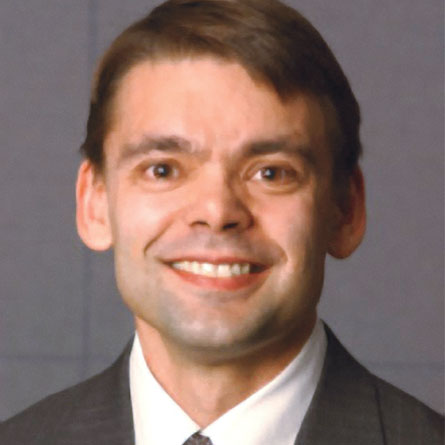Energy, safety and nuclear capabilities intertwined
- More than 2 years ago
On January 1, Charles D. Ferguson became president of the Federation of American Scientists, a nongovernmental organization founded in 1945 by Manhattan Project scientists to promote humanitarian uses of science and technology. Ferguson worked at FAS 10 years ago as director of its nuclear policy project, and he returns after working from 2004 to 2009 at the Council on Foreign Relations as part of the Independent Task Force on U.S. Nuclear Weapons Policy. Science News assistant managing editor Kristina Bartlett Brody asked Ferguson to discuss nuclear energy and nonproliferation.

How does nuclear energy fit in the overall energy picture today?
To put this in somewhat stark terms, it seems that often the debate is either death by climate change or death by nuclear war. It seems that dire at times. So, we’re all looking around for solutions, and there’s a recognition that there’s no one so-called silver bullet, but there are strong advocates who say that nuclear power must play a major role in combating climate change … because an operating nuclear power plant does not emit greenhouse gases.… Now, people in the nonproliferation community tend to think that if we go down that path, we’re going to have more and more countries with nuclear power plants and in essence latent nuclear weapons programs. Are we going to be in what [nonproliferation expert] Albert Wohlstetter warned of 30 years ago, “life in a nuclear armed crowd”?
We need a comprehensive global energy assessment. President Obama has a great opportunity. He should go back to President Eisenhower’s speech from 1953, the “Atoms for Peace” speech. An update for our current times is that, instead of so much relying on nuclear energy — atoms for peace — in saving the world, instead we need to harness all energy technologies much more wisely and especially shift to greener technologies. Nuclear can be part of that, but we also need to uphold all the criteria: safety, security and nonproliferation. Certain countries can meet those criteria and others will not. And I think the United States has a great opportunity to be a provider and not a denier of technology in the energy sector.
Do countries use climate change to justify pursuing nuclear programs?
I think the two justifications for countries to embrace peaceful nuclear power are climate change and energy security. There are different definitions of what it means to have energy security. It certainly is not energy independence. Very few countries are energy independent. The reality is we’re in an energy interdependent world.
But the concern is that countries may be hedging against their neighbors and other nuclear powers developing nuclear weapons programs. They hedge by building up the infrastructure to teach people about nuclear technologies, either openly or covertly. And they may never even acquire a nuclear power plant to make electricity, and still acquire the capability to make nuclear weapons. North Korea, for example, has never produced electricity with nuclear power, but they’ve produced enough plutonium for six to 10 or so weapons. And they use a research reactor. That’s the starter kit for a nuclear bomb program for many countries.
What is an example of an emerging technology for detecting nuclear weapons production?
In 2005, a distinguished group of scientists wrote a report for the American Physical Society and drew attention to the need to “revitalize technical safeguards R&D” and also emphasized that nuclear program detection technologies were largely developed 10 to 20 years ago. This group called for a sustained increase in the technical safeguards R&D budget, which at that time was less than $5 million annually.
A technique that deserves further development is wide area environmental sampling in order to determine the efficacy of detecting releases of material, such as enriched uranium or fluorine, from clandestine nuclear fuel cycle facilities.
I think one of our best means of intelligence is the ongoing inspections by the International Atomic Energy Agency. The IAEA could benefit from also investing more in satellite imagery analysis, but the agency confronts significant budgetary limitations.
FAS scientists have been assessing nuclear capability at specific Iranian sites. How serious is the Iran situation?
I don’t think we’re anywhere near a crisis with them right now. What I mean by that is, technologically, based on what we know — and we could be caught by surprise again, that’s true — but based on what we know, it looks like Iran is still at least a few years away from acquiring enough low-enriched uranium to have a serious breakout capability.